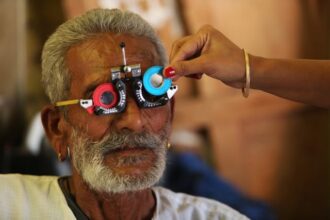A study scheduled for presentation at the SLEEP 2024 annual meeting has revealed that consistent use of positive airway pressure (PAP) machines by individuals with obstructive sleep apnea can significantly enhance their romantic relationships.
The findings indicate that those who adhere more closely to PAP therapy experience higher satisfaction in their relationships, alongside reduced conflict. Moreover, an increase in sleep efficiency among these patients is also linked to improved relationship satisfaction, as reported by both the individuals affected and their partners.
Wendy Troxel, the study’s lead researcher, emphasises the influence of sleep and sleep disorders on relationship quality. Troxel, a senior behavioural scientist at RAND and a licensed clinical psychologist with an adjunct professorship at the University of Utah, where the research was conducted, highlighted the potential of these insights to motivate individuals suffering from sleep apnea to commit to their treatment plans. In response to the challenges that couples may face in adhering to PAP therapy, Troxel and her team have developed a couples-based treatment strategy named ‘We-PAP’. This approach acknowledges that the sleep patterns of couples are interconnected and aims to assist both patients and their partners in navigating the challenges of PAP therapy together.
The American Academy of Sleep Medicine notes that nearly 30 million adults in the U.S. suffer from obstructive sleep apnea, a chronic condition that causes the upper airway to collapse repeatedly during sleep. Snoring, a primary symptom of sleep apnea, often disrupts partners’ sleep, making it a significant relationship issue. PAP therapy, which sustains the throat open with mild air pressure delivered through a mask, remains a prevalent treatment.
This research involved 36 couples, each consisting of a patient beginning PAP treatment and their partner. Adherence to the therapy was objectively monitored over three months, while sleep quality was assessed using actigraphy—a method that measures sleep duration and efficiency. Both partners in each couple also provided self-reports on their relationship satisfaction and conflict levels.
Troxel stresses the importance of considering sleep quality in evaluations of relationship health, pointing out the broad impacts of sleep on personal well-being. She notes the growing trend of ‘sleep divorces’, where couples choose to sleep separately, and the high rate of actual divorces to underline sleep’s critical role in maintaining healthy relationships. Integrating these insights into treatment and relationship counselling could pave the way for more stable and satisfying partnerships.
More information: Wendy Troxel et al, Breathing Easy Together: How Positive Airway Pressure Adherence Benefits Both Patients and Partners, SLEEP. DOI: 10.1093/sleep/zsae067.0569
Journal information: SLEEP Provided by American Academy of Sleep Medicine








